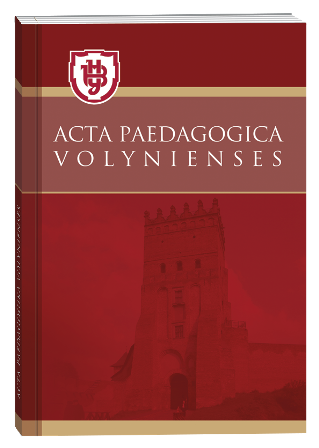COMMUNICATIVE APPROACH IN TEACHING GRAMMAR TO STUDENTS OF HIGHER EDUCATIONAL INSTITUTIONS AT ENGLISH CLASSES
DOI:
https://doi.org/10.32782/apv/2023.4.11Keywords:
communicative competence, grammar, foreign language speech activity, intercultural communication, thematic context, students of higher educational institutionsAbstract
The article highlights the problem of acquisition of foreign language communicative competence in the interrelationship of its components by students of higher educational institutions. The communicative approach to learning a foreign language is presented as the main one at the modern stage of the educational order of society. An objective approach to assessing the importance and place of grammar in English language learning is outlined: grammar is no longer a goal, but one of the important means of language learning, an integral component of all types of speech activity. The criteria for selecting modern methods of foreign language learning are defined, including: motivation, communication, cognition, student-centeredness, interactivity, creativity, autonomy. It was found out that communicative competence is the basis of a communicative approach to learning foreign languages. The communicative approach to learning foreign languages is based on the fact that the learning process is a model of communication and consists of five principles: the principle of speech and mental activity, the principle of individualization, the principle of functionality, the principle of situationality, and the principle of novelty. The purpose of teaching a foreign language in institutions of higher education at the current stage is characterized: acquisition of communicative competence by learners, which allows them to implement their knowledge, skills, and abilities to solve specific communicative tasks in real life situations. It is noted that effective language training of students of higher educational institutions is not possible without high-quality didactic materials and the use of modern information technologies. On the basis of the analysed domestic and foreign scientific studies highlighting the methodological features of teaching practical grammar based on the communicative approach, a general conceptual framework and methodological conclusions regarding the most effective organization of teaching this linguistic aspect were formed. It was proved that combinatoriality of various types of educational work on language training and mastering all types of speech activity in the thematic context contribute to the acquisition of foreign language grammatical phenomena.
References
Байдюк Л. Комунікативний підхід до навчання англійської мови учнів початкової школи. https://library.udpu.edu.ua/library_files/stud_konferenzia/2016_1/3.pdf (Дата звернення: 10.10.2023).
Будз І. Ф., Поченюк Я. В. Комунікативний підхід у навчанні граматики англійської мови. URL: http://zfs-journal.uzhnu.uz.ua/archive/27/part_1/26.pdf (Дата звернення: 08.10.23).
Гришкова Р. О. Сучасний підручник з іноземної мови як засіб міжкультурного спілкування. URL: https://lib.chmnu.edu.ua/pdf/naukpraci/pedagogika/2003/28-15-27.pdf (Дата звернення: 14.09.2023).
Кузьмінський А. І., Омеляненко В. Л. Педагогіка : підручн. Київ : Знання-Прес, 2008. 447 с.
Скуратівська М. О. Cучасні методи та технології викладання іноземних мов. URL: http://intkonf.org/skurativska-mo-suchasni-metodi-ta-tehnologiyi-vikladannya-inozemnih-mov-u-vischiy-shkoli-ukrayini (Дата звернення: 28.09.2023).
Pérez-Llantada C. New Trends in Grammar Teaching: Issues and Applications. An interview with Prof. Diane Larsen-Freeman. Atlantis. 2007. Р. 157–163.
Waugh D., Warner C., Waugh R. Teaching grammar, punctuation and spelling in primary schools. London: SAGE Publications Ltd., 2019. 272 p.







